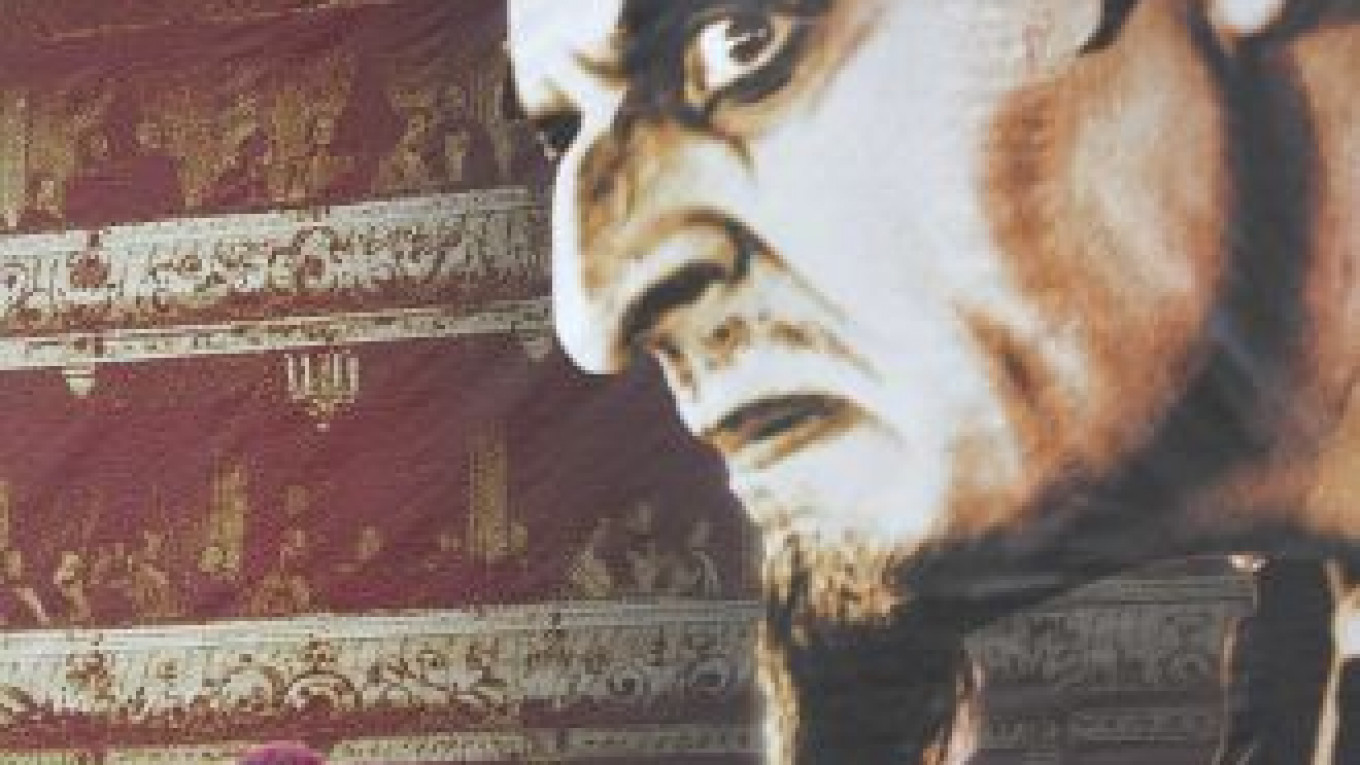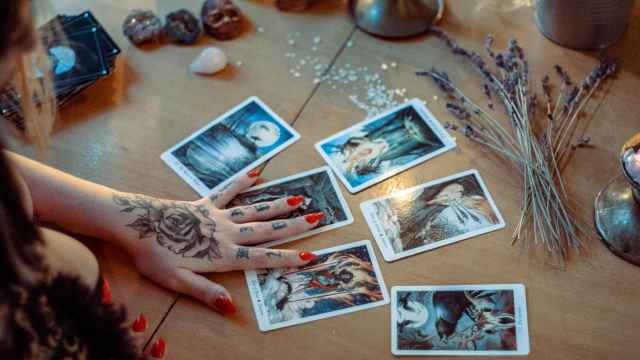Editor's note: This story is part of an occasional series marking 20 years after the Soviet collapse.
Nikolai Grishko couldn’t afford to get distracted.
Mikhail Gorbachev’s perestroika was shattering the political and economic fabric around him. Soon the world he knew would cease to exist. But he had to stay focused on his goal. As the Soviet Union collapsed, the economics professor raced around Moscow hunting for ballet shoes.
More than 20 years later, he represents one of the very few success stories, beyond vodka and caviar, for Russian-made high-quality consumer products with a global reputation.
Back in the late 1980s, all signs indicated he should start his own shoe company, Grishko told The Moscow Times. His wife, who was a professional step dancer in the Soviet Union, began each of her workdays with a ballet class. His neighbors were in a ballet troupe and sometimes sold the special footwear, called pointe shoes, abroad.
But what finally convinced Grishko to start his own business was when a Soviet trade organization responsible for sales to the United States approached him with a request to find pointe shoes for an American dancer.
The request sent him searching. But finding the shoes was not easy. By 1988, the theater workshops had already begun to fall apart and could hardly supply themselves, let alone external consumers.
Now, Grishko can have as many pointe shoes as he wants.
The company he founded that bears his name, and Russian Class, the other Moscow-based pointe maker, have taken center stage in the production of ballet shoes around the world. The companies’ exports have become so large they are challenging international competitors that boast decades of experience in the industry.
The global association of Russia with great ballet — as exemplified by the excitement over this Friday’s reopening of the Bolshoi Theater — is also an asset for marketing Russian-made ballet shoes.
Shoemaker Capezio, based in the United States and created by an Italian master, had celebrated its 100th anniversary when Grishko was just filling out registration papers for his company. Now the venerable firm is feeling the pressure on its own turf from the Russian enterprise.
“Have you ever seen a Russian company that pushed an Italian one out of the market for shoes?” Grishko asked rhetorically.
Grishko exports shoes to more than 60 countries. The United States is its first and largest client with sales of up to 100,000 pointe shoes per year. Over 300 U.S. stores carry Grishko products, which include other dance footwear and active clothing in addition to the ballet shoes.
The United States, Japan and Australia, are also leading markets for its domestic competitor Russian Class.
Grishko factories make 40,000 pointe shoes per month, but even that is not enough to satisfy demand. Roman Kukushkin, founder of Russian Class, would not disclose how many shoes his company produces per month, but said they are nearing Grishko levels.
The Russian products “are amazing,” said Renee Laverdiere, a retired ballerina who now owns a dance shop in New York. “The Russians really seem to have a knack for pointe shoes.”
But gaining the trust of seasoned dancers like Laverdiere was far from straightforward. The Russian companies first had to break down stereotypes to get their shoes on store shelves.
Soviet Shoes Snubbed
Looking at the spectacle that is Soviet ballet, it is easy to assume that the dancers not only had exceptional technique but also the best pointe shoes. That is a myth, Grishko said.
Grishko described the shoes that were made in the theater workshops during Soviet times as ugly and uncomfortable. Nobody in the West wanted them because they didn’t meet their standards, Grishko said. Western ballerinas had to learn traditional as well as contemporary dance, but in the Soviet Union contemporary dance was practically nonexistent, as were the skills to make pointe shoes for it.
Russian companies had to change the technology they used to bring their shoes to a higher standard. The technical problems addressed, Grishko and Kukushkin proudly stamped “Made in Russia” labels on the soles of their creations. Here they came across another obstacle.
“The Russians are looked upon with disgust on the world market,” Grishko said. “When [customers] see the sign ‘Made in Russia,’ it creates distrust. We constantly have to fight this.”
There is a widespread belief that Russian producers have inconsistent quality and a penchant to violate contracts, Grishko said. It was up to him and Kukushkin to prove that they were different.
“We are breaking the stereotype about Russian producers, Russian distributors,” Grishko said. “We can show that the Russian producer always keeps his word and performs all the conditions of the contract.”
Developing brand recognition abroad was also a lengthy battle, said Irina Wilson, Grishko distributor in the United States and Canada. Ballerinas typically use one brand of pointe shoe throughout their careers. Convincing them to switch to Russian brands took more than 10 years.
“If someone is in Grishko, she will be in Grishko all her life. The brand might change, but very slowly because it’s like your second feet,” said Sophie Simpson, pointe shoe fitter with Freed of London.
Freed of London, for instance, is still the most popular brand for British dancers and is the official shoemaker for many British dance companies. But things are changing now that Western dancers are more familiar with Russian labels.
“Often teachers grow up using a particular shoe so they encourage the girls to wear what worked for them,” Wilson said. “Back when we were starting just about everyone had grown up in Capezio. Now we have teachers wearing Grishko.”
Plastic threats
Roman Kukushkin got his first taste of ballet when he was 4 years old, roaming the back stage of the Bolshoi Theater. His mother was working in a theater workshop and he later joined the staff himself as a shoemaker. Whenever he got a free moment from work, Kukushkin went to the rehearsals to watch the ballerinas dance.
“I loved to just be in classes. There would be a small recorder playing or someone accompanying. They would be all sweaty in their torn, dirty shirts, tattered shoes.
They are doing some move and you start to understand how much strength that takes,” Kukushkin said.
Kukushkin still manages Russian Class, which he established in 1991, in line with the techniques he learned while working at the Bolshoi Theater. Keeping with tradition, Russian Class and Grishko maintain a staff of shoe masters who handcraft the pointe shoes. Most of their competitors, however, have outsourced production to Asian countries where the shoes are put together by machines.
Russian producers argue that crafting the shoes by hand allows them to offer more variations and fulfill the special needs of dancers. Handcrafting also preserves the psychological connection between the dancer and her shoemaker, Grishko said. Each Grishko shoe is marked with the shoemaker’s number, which can become a lucky charm for the ballerina.
“Ballerinas feel the hands of different masters. It’s fantastic,” Grishko said.
Another threat comes from plastic-lined pointe shoes that are sweeping the market.
The dancers at Stanislavsky and Nemirovich-Danchenko Musical Theater are currently wearing a mix of Grishko, Russian Class and American Gaynor Minden pointe shoes, which are made with plastic. But the theater’s management is considering switching to Minden shoes for all dancers, the theater’s press office said.
Grishko and Kukushkin warn that these shoes are harmful to the dancers’ feet. Grishko said they can cause infections and cracks in the bones of the foot.
“Footwear must live. It must breathe,” Kukushkin said. “If only so that the foot of the dancer stays healthy.”
The companies are not averse to all new technologies. Grishko even uses nanotechnology to make its pointe shoes. The insides of shoe model Miracle are treated with microscopic bits of silver, which help to kill microbes. Grishko also works with Moscow-based Andreyev Acoustics Institute, which previously worked to reduce noise emissions from Soviet submarines and is now helping to create pointe shoes that hit the floor quietly.
The Bolshoi shoemakers used to evaluate the quality of their work by the feedback they got after the ballet troupes came from their tours, Kukushkin said. If the shoes they made were good, the ballerina would come to the workshop and thank her shoemaker.
Russian pointe shoe producers are now the last remaining stronghold of these old traditions. Many of the girls have long finished their careers as ballerinas, Kukushkin said. “Once they were just studying in schools. Now they are retired, but we still exist.”
A Message from The Moscow Times:
Dear readers,
We are facing unprecedented challenges. Russia's Prosecutor General's Office has designated The Moscow Times as an "undesirable" organization, criminalizing our work and putting our staff at risk of prosecution. This follows our earlier unjust labeling as a "foreign agent."
These actions are direct attempts to silence independent journalism in Russia. The authorities claim our work "discredits the decisions of the Russian leadership." We see things differently: we strive to provide accurate, unbiased reporting on Russia.
We, the journalists of The Moscow Times, refuse to be silenced. But to continue our work, we need your help.
Your support, no matter how small, makes a world of difference. If you can, please support us monthly starting from just $2. It's quick to set up, and every contribution makes a significant impact.
By supporting The Moscow Times, you're defending open, independent journalism in the face of repression. Thank you for standing with us.
Remind me later.






